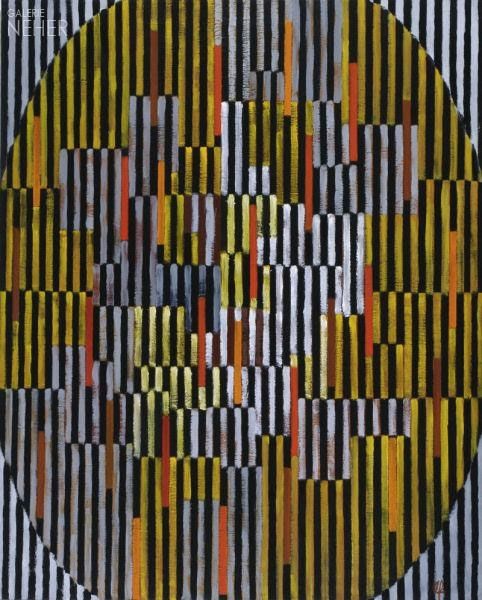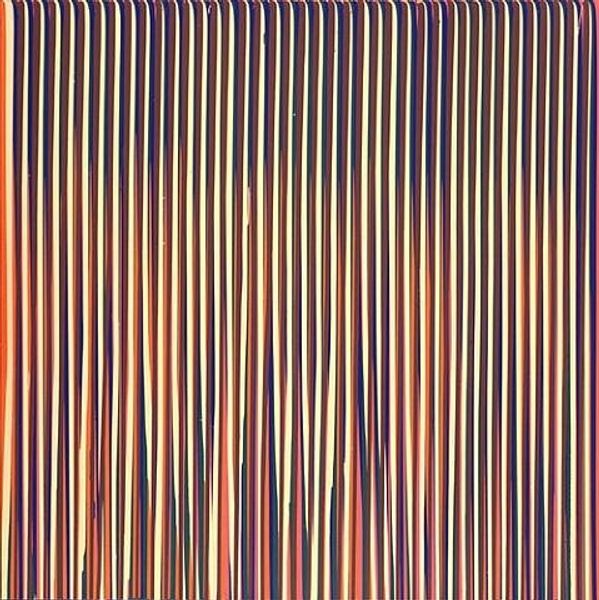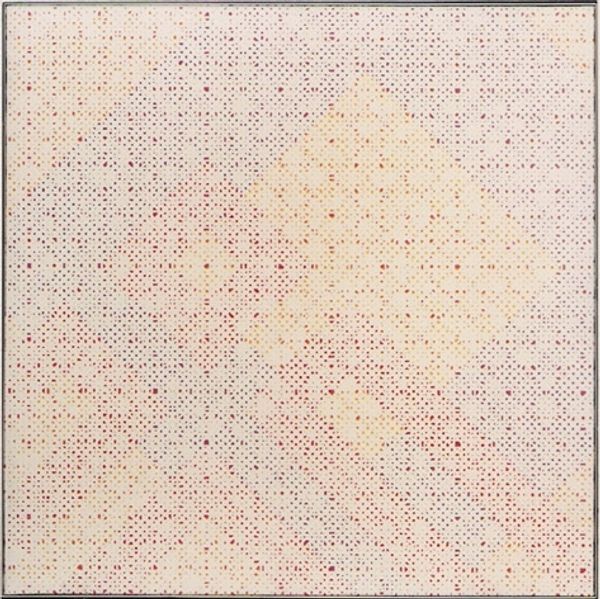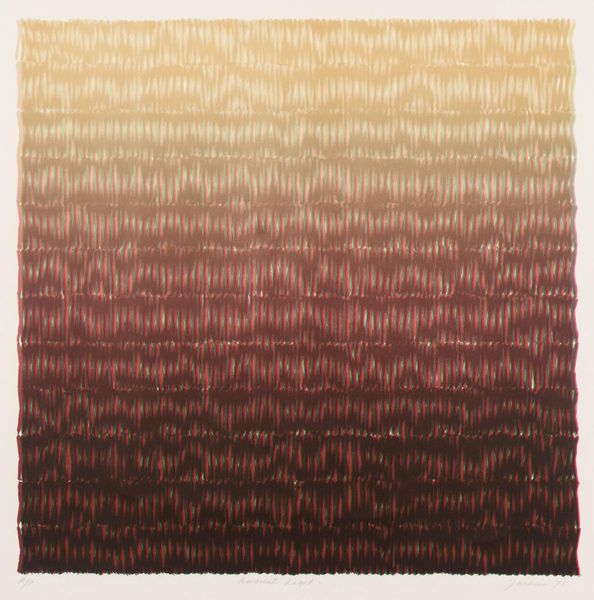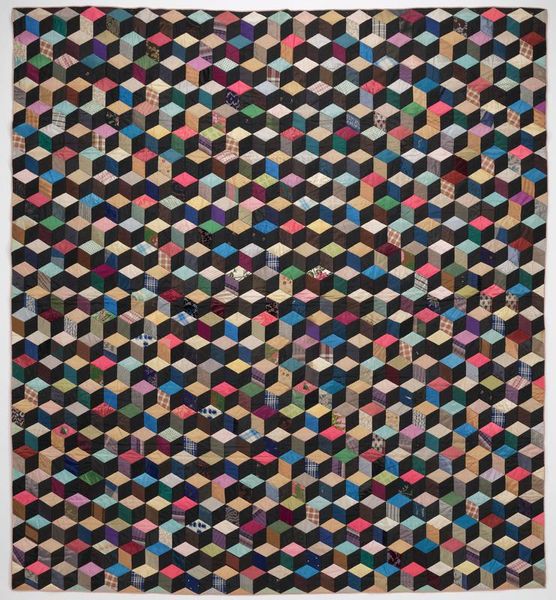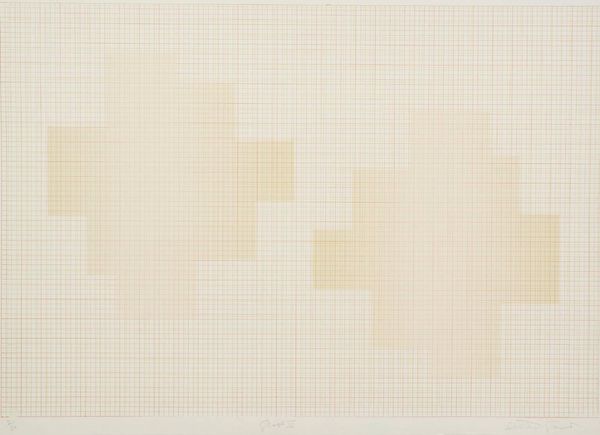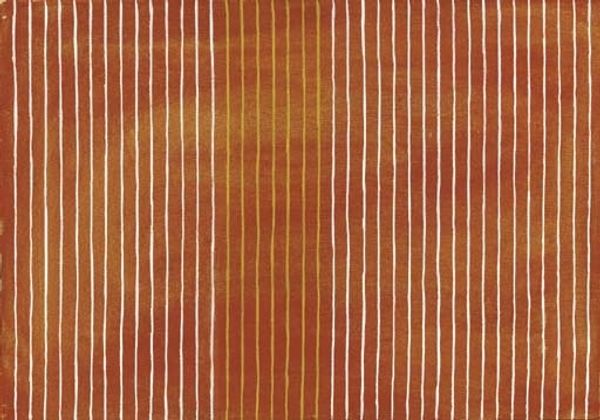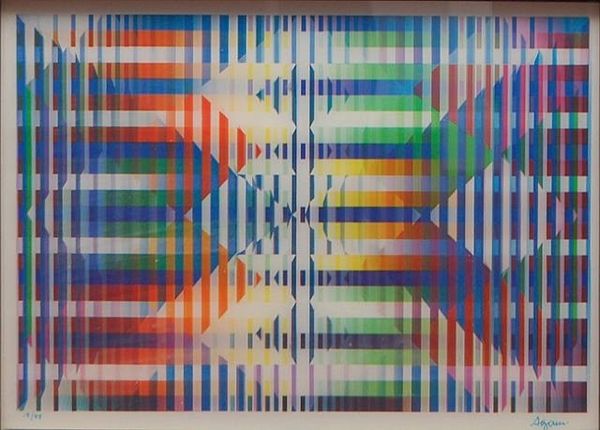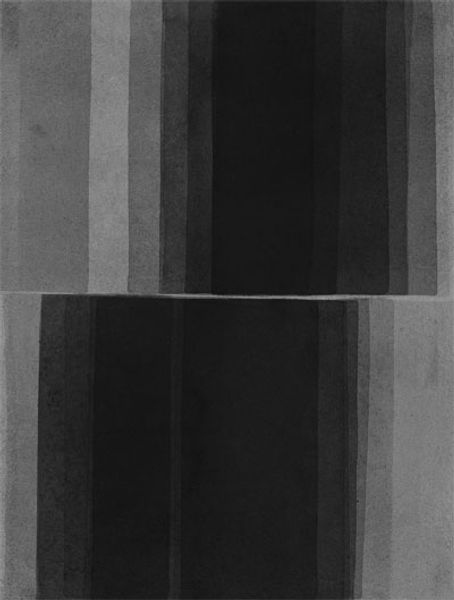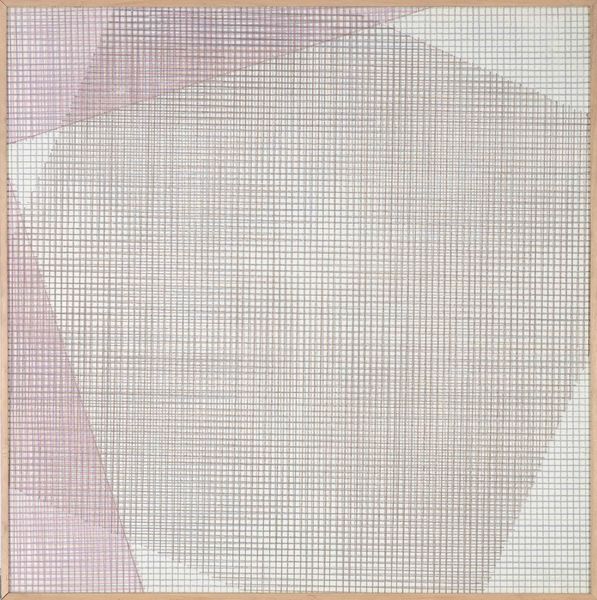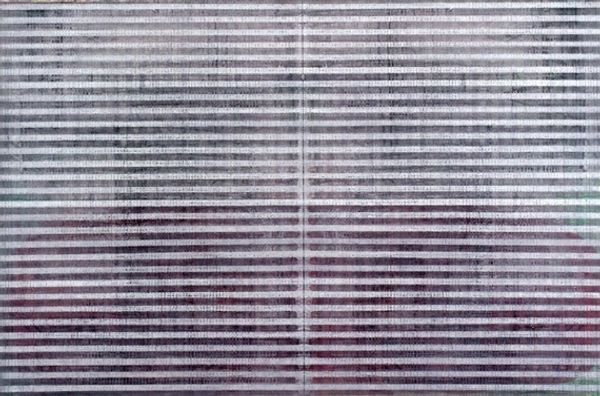
#
natural stone pattern
#
pattern
#
op art
#
geometric pattern
#
abstract pattern
#
repetitive shape and pattern
#
minimal pattern
#
organic pattern
#
geometric
#
simple pattern
#
vertical pattern
#
abstraction
#
line
#
layered pattern
#
hard-edge-painting
Copyright: Adolf Fleischmann,Fair Use
Curator: Take a moment to absorb this Untitled piece by Adolf Fleischmann, crafted in 1952. What are your immediate reactions? Editor: It hums! It feels like I'm looking at a meticulously planned cityscape shimmering at dusk. All those parallel lines meeting, but never quite… It gives me a gentle vibrational feeling. Curator: That "hum" resonates with Fleischmann's background in music. Originally a doctor, he devoted himself to art, influenced by the Bauhaus and later by geometric abstraction and hard-edge painting. He even developed his own theory of color harmonies! Editor: Color harmonies! Yes! It's not jarring. Even that solitary, intense red line in the centre feels intentional, rather than disruptive. I'm seeing how geometric forms aren’t just cold shapes here. He humanizes them somehow. It has warmth despite its austerity. Did the political climate have an impact? 1952 seems a particularly interesting time to embrace pure abstraction. Curator: Absolutely. Post-war, there was a push for universal languages in art, ones that transcended national narratives after all the destructive, politicized imagery that preceded it. Abstraction was a way of starting over, claiming neutrality but inevitably expressing something about the hopes for a new world order. Although, in a strange twist, these supposedly neutral forms often got used to prop up Cold War ideologies about freedom of expression in the West. Editor: So even supposed neutrality became politicized. But returning to Fleischmann... this feels deeply considered, and also free, unburdened. It feels like an invitation to explore your inner self without explicit direction. Curator: I agree. There's an internal logic at play, a sense of searching for some ultimate underlying harmony in the universe. Editor: Makes you think how many interpretations exist beyond our discussion. Perhaps that’s Fleischmann's genius—planting that possibility inside what seems fixed, unyielding. Curator: It certainly provokes the kind of thoughtful looking that shapes our world views. Editor: So much more here than just a nice geometric pattern. Thanks for opening my eyes even further!
Comments
No comments
Be the first to comment and join the conversation on the ultimate creative platform.
